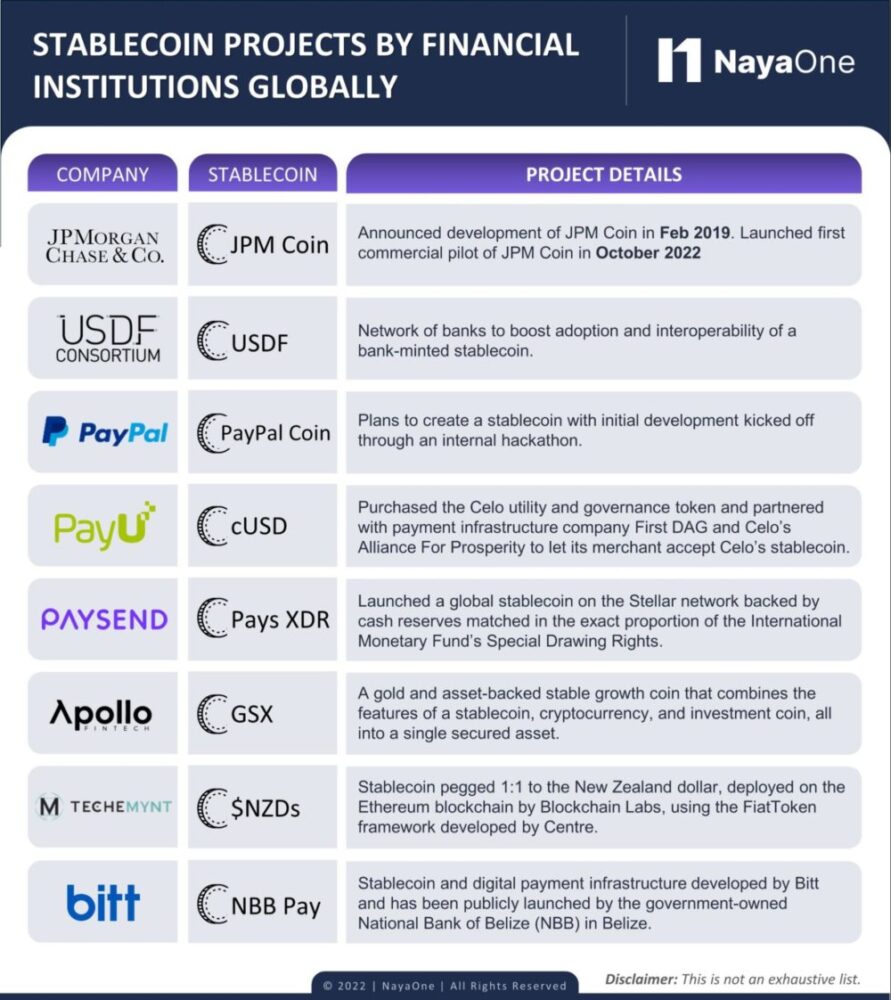
Jonathan Middleton
Director, Financial Services
The crypto economy is booming, and governments across the globe are taking that into account. Financial regulators have increased their scrutiny of the industry to implement measures that would lower the risks for consumers.
The extreme volatility of cryptocurrencies has always been a sore point among investors and advisors. For instance, in early 2018, the market capitalisation for cryptocurrencies stood at USD 800 billion. But six months later, it dipped to USD 200 billion.
This kind of price fluctuation compelled the industry to innovate and create stablecoins.
What are Stablecoins?
Stablecoins are a sub-segment of cryptocurrencies. They are typically linked to traditional assets backed by governments, such as the US dollar or gold. This makes stablecoins a more reliable digital asset since an underlying asset governs their fluctuations.
Stablecoins first launched in 2014. They started gaining popularity among traders and investors on crypto exchanges who were looking for increased liquidity and fiat equivalents to cushion the blow from volatility. In February 2022, the market capitalisation of stablecoins touched USD 180 billion, up from just USD 5 billion in 2020.
This spectacular rise is due to traditional banks and Financial Institutions‘ interest in developing their own stablecoins. Some experts believe that stablecoins could become the bridge between cryptocurrencies and fiat currencies.
In the US, financial regulators have been tasked with studying and reporting on the creation of a digital dollar. Meanwhile, Sweden has already launched a digital currency called eKrona that’s supported by a central bank.
Types of Stablecoins
There are three main types of stablecoins:
- Fiat-backed stablecoins are supported by the equivalent amount in currencies such as USD, EUR, or GBP. This is a simple and centralised system. Tether, the first stablecoin, is an example of this category.
- Commodity-backed stablecoins are pegged to the value of gold or other commodities traded in the market. Each stablecoin has a specific value linked to the commodity (for instance, 1 gold-backed stablecoin is equal to 1 gram of gold).
- Crypto-backed stablecoins are secured by a mix of cryptocurrencies to curtail risks. This system leverages blockchain technology and operates on a decentralised structure that is transparent and efficient.
- Algorithmic stablecoins are not asset-pegged. Complex algorithms enable the expansion or contraction of stablecoins. The objective is to match the price of the cryptocurrency to a specific fiat currency.
Re-imagining Cryptos
Since stablecoins are often pegged to fiat currencies, they can be transferred between exchanges. This allows traders and investors to leverage opportunities in cross-exchange arbitration, lending, and borrowing.
In Decentralised Finance (DeFi), through smart contracts, stablecoin savers can provide instant liquidity to borrowers while earning interest.
Even as regulators and industry bodies mull over establishing governing frameworks, the use of stablecoins is expected to expand.
JPM Coin and USDF
JPMorgan Chase’s JPM Coin was launched in October 2021. Meanwhile, USDF, a stablecoin launched in January 2022 by a group of US banks. Both are expected to boost the adoption of stablecoins.
JPM Coin aims to simplify the complexities that are generally rife in cross-border payments. It allows the company’s clients to transfer US dollars within the system and eases the process of liquidity funding and payments.
It also supports delivery vs. payment, payment vs. payment, and machine-to-machine payments. Leading fintech players such as PayPal and PayU are expected to join the race shortly with their own stablecoins.
Africa's GSX
Africa’s Apollo Fintech has launched a gold-backed stablecoin that combines the features of a stablecoin, cryptocurrency, and investment coin. Called Gold Secured Currency (GSX), it increases in value as new assets are added to the trust backing it. Holders of GSX stablecoins can easily track the value of each underlying asset while also reaping the benefits of annual dividends as a reward.
Brazil's cREAL
In Brazil, mobile-first DeFi platform Celo’s cREAL stablecoin is linked to the local currency.
New Zealand's $NZDS
Meanwhile, $NZDS, created by financial service provider Techemynt, is the first stablecoin pegged to the New Zealand dollar.
Techemynt’s investor portal offers consumers onboarding assistance along with buying and selling services. $NZDS, built on the Ethereum network, complies with New Zealand’s regulations, and leverages blockchain to make all transactions transparent. The company aims to integrate $NZDS with wallet providers and fintech applications in the coming months.
UK's 1GBP
In January 2023, BitcoinPoint, a platform for Bitcoin wallets and ATM cashouts, integrated GBPT ($GBPT), a British-backed stablecoin issued by poundtoken, into their system.
This stablecoin is available on their platform as well as through over 18,000 nationwide ATM machines. This integration provides the British public with more convenient access to both retail and wholesale payments using the GBP stablecoin.
Future Roadmap
Will stablecoins replace fiat currencies in popularity?
Only time will tell. The ecosystem is peppered with stories of projects that failed to take off or controversies surrounding existing players.
In 2019, Meta Platforms (formerly Facebook) proposed Libra (now known as Diem), a stablecoin backed by a collection of low-volatility assets and linked to multiple fiat currencies. But after much wrangling and a backlash from regulators across the globe, including the US Treasury, the project was shelved.
Tether, the most popular stablecoin, has been in the eye of a regulatory storm for a while now. The company backing Tether has been accused of cover-up with claims that many of its holdings were dodgy.
However, with changing perspectives we could see new guidelines and systems that might make stablecoins a preferred choice of investment. The crypto ecosystem is still evolving, and becoming more crowded and complex by the day.
It’s imperative for financial service companies contemplating their own stablecoins to exercise caution. Partnering with third-party providers with the right technology or platform expertise can help them effectively tap into the vast opportunities that stablecoins offer while circumventing the pitfalls.
The NayaOne platform is built for fintech innovation and collaboration. It allows financial institutions the flexibility to test, develop, and integrate with multiple technology vendors within safe and disconnected Digital Sandbox. With the option to choose from the best-in-class providers, the focus remains on product development at all times.







